The latest games in the Pokemon franchise let you become a master Trainer as you explore the lovely Galarian countryside.
Have you ever wondered what it would be like to wander around the British countryside, capturing pocket monsters, battling trainers, and enjoying camping in the great outdoors? Pokemon Sword and Pokemon Shield somehow fulfills a fantasy we hadn’t had until we saw the first trailer for the game.
And here we are!
Pokemon Sword and Shield are the latest installments in the main series of Pokemon role-playing games. While previous games, such as Pokemon Sun and Moon, were released for handheld devices (like the Nintendo 3DS), Pokemon Sword and Shield are on Nintendo Switch, so you can play them both on the TV (unless you have a Switch Lite) and on the go.
Players will take on the role of a new Pokemon trainer (they can be a boy or girl character), who will travel throughout the Galar region of the Pokemon universe as a competitor in the Gym Challenge. The Gym Challenge asks trainers to compete in a series of eight Pokemon battles against eight different Gym leaders. Those who successfully complete the Challenge can go on to participate in the Champion Cup, a tournament that decides the ultimate Pokemon Champion of the Galar region.
While both Pokemon Sword and Pokemon Shield feature this same basic storyline, the games do differ in a few ways. For one, players will take on a couple of different gym leaders depending on the game they’re playing. Plus, a variety of different Pokemon are exclusive to each of the two games. For a more in-depth look at the differences between Sword and Shield, check out our guide.
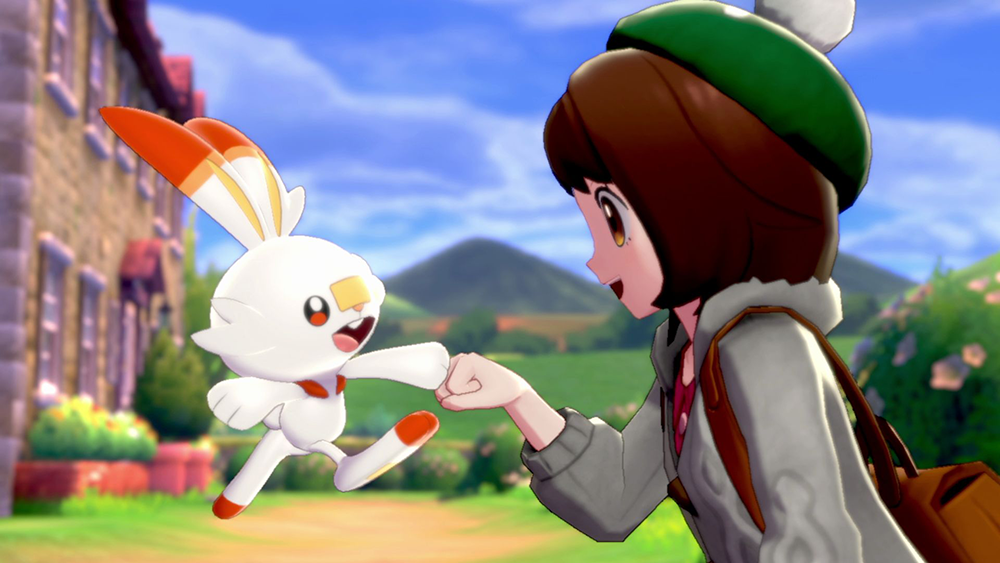
Players start by choosing one of three adorable Pokemon to be their first partner. You can pick Scorbunny, the Fire-type Rabbit Pokemon; Grookey, the Grass-type Chimp Pokemon; or Sobble, the Water-type Water Lizard Pokemon.
From there, you’ll begin your journey across the Galar region. You’ll need to take on each of the game’s eight Gyms in a particular order, and the game unfolds in a linear fashion so you know exactly where to go next. In between Gyms, you can battle and capture wild Pokemon to add them to your collection, compete against other Pokemon trainers that are scattered throughout the game’s paths (called “routes”), and visit a variety of towns that are inspired by locations in England.
Whether you’re battling a wild Pokemon or another trainer, battles play out in much the same way. You tell your Pokemon which move to perform (each creature can know up to four moves), and moves are activated in a turn-based, rather than real-time fashion.
Each Pokemon has a “type,” such as Water, Fairy, and Fighting (among many others), and each type is particularly strong and particularly weak against other specific types. For instance, Sobble, a Water-type Pokemon, is really strong against a Fire-type Pokemon like Scorbunny. However, Sobble is also very weak against a Grass-type Pokemon such as Grookey.
With so many types to keep track of, you may want to check or create a chart that breaks down the strengths and weaknesses of each type, at least until you start memorizing some of the interactions as you play.
To each game’s credit, Pokemon Sword and Shield will tell you whether a Pokemon’s move will be “not very effective,” “effective,” or “super effective” against the current opponent, but these tips only show up after you’ve already faced a particular Pokemon species in a previous battle. The first time you face a new Pokemon species in battle, the tips aren’t there.
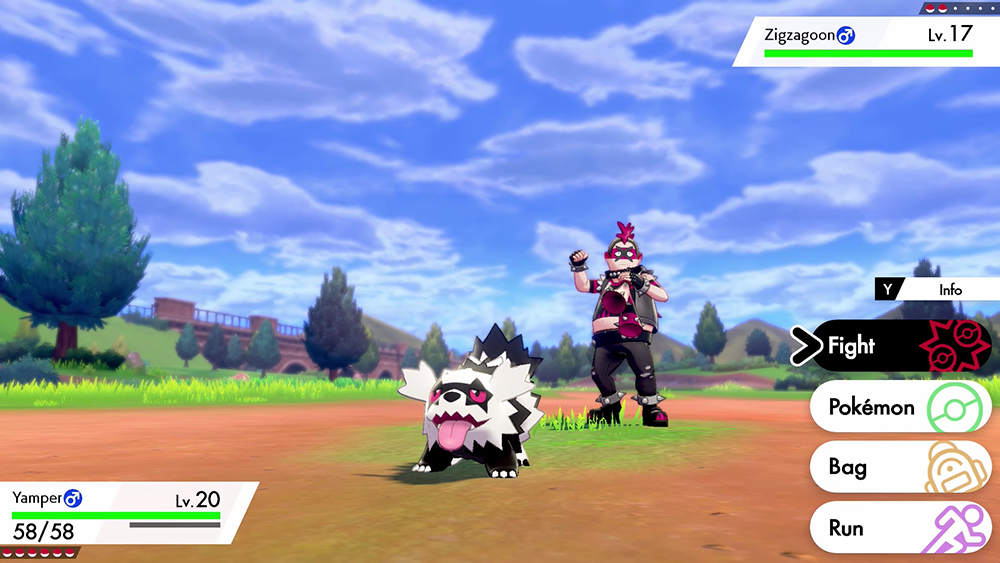
At any one time, you can have up to six Pokemon on your current team, and you can switch between these Pokemon during a battle when it’s your turn to take an action. If a Pokemon takes too much damage, it will faint and you can either use an item to revive it, or take your team to a Pokemon Center after the battle to heal them.
As you complete battles, your team of six Pokemon will earn experience points and can eventually level up and even evolve into new creatures over time (some Pokemon have evolution requirements outside of simply being leveled up, and some Pokemon never evolve at all).
While the battle system in Sword and Shield is quite simple on the surface, there’s actually a lot going on. With so many Pokemon “types” to keep track of, and the ability to make Pokemon learn and forget moves as they level up, there’s a large strategy layer here, as players can choose from hundreds of Pokemon to create a team that suits their individual play style. (Will you be an offensive player who focuses only on physical damage, or will you play with status effects, like putting opponents to sleep or paralyzing them so they may be unable to move?)
Even with this variety, however, the games aren’t difficult. In our experience, you can streamline things by simply keeping your starting Pokemon in the first position on your team at all times, which allows it to become super strong and will help you win most battles simply due to its brute strength (even if it’s at a type disadvantage).
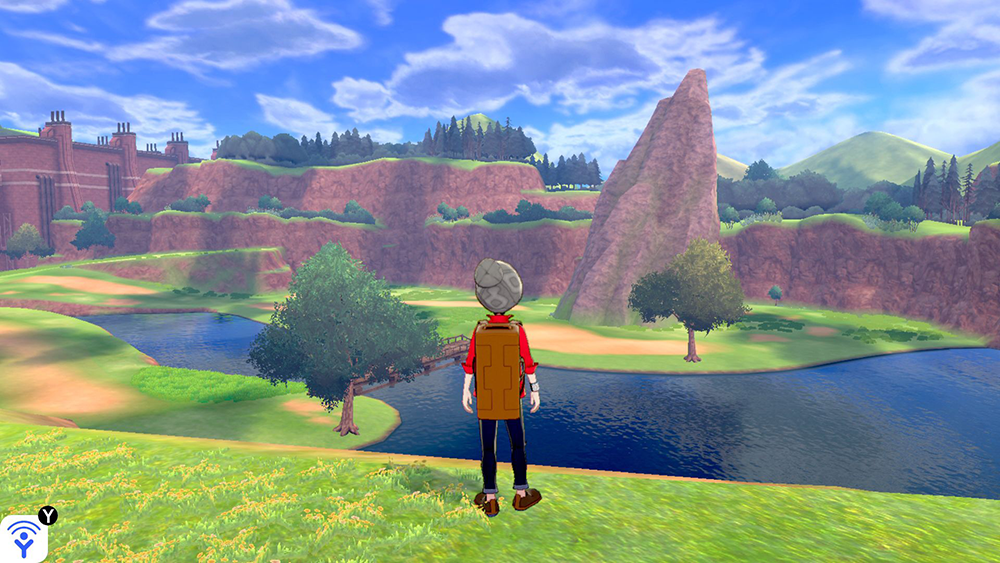
Quite a few! For one, you explore a vast Wild Area, which is a new feature not seen in previous Pokemon games.
The Wild Area is broken into multiple zones, which can each have its own weather condition (like a thunderstorm or blizzard) that triggers the appearance of different kinds of wild Pokemon. If you’re interested in collecting one of every Pokemon in the game, or simply participating in battles to level up your team and make them stronger, you can easily spend hours wandering around this area without actually making progress in the game’s storyline.
You can also set up camp as you play, and spend time with your Pokemon to increase your friendships with them. You can play with toys to make your Pokemon happy, and even cook up some curry for yourself and your team using the ingredients you can collect as you play. There are multiple types of curry to discover, so you can fill out your Curry Dex by cooking them all, just like you discover new types of Pokemon to add to your Pokedex.
A couple of new battle features were also introduced in Sword and Shield: Dynamaxing and Gigantamaxing. Dynamaxing allows you to transform one of your Pokemon into a huge, stronger version of itself, which can help you take on powerful opponents. Gigantamaxing is similar, but the Pokemon will also temporarily change in appearance in addition to growing much larger.
You can compete against these large Dynamaxed Pokemon on your own or with up to three other real players in Max Raid Battles in the game’s Wild Area. If you win a Max Raid Battle, you’ll have the opportunity to catch the opposing Pokemon.
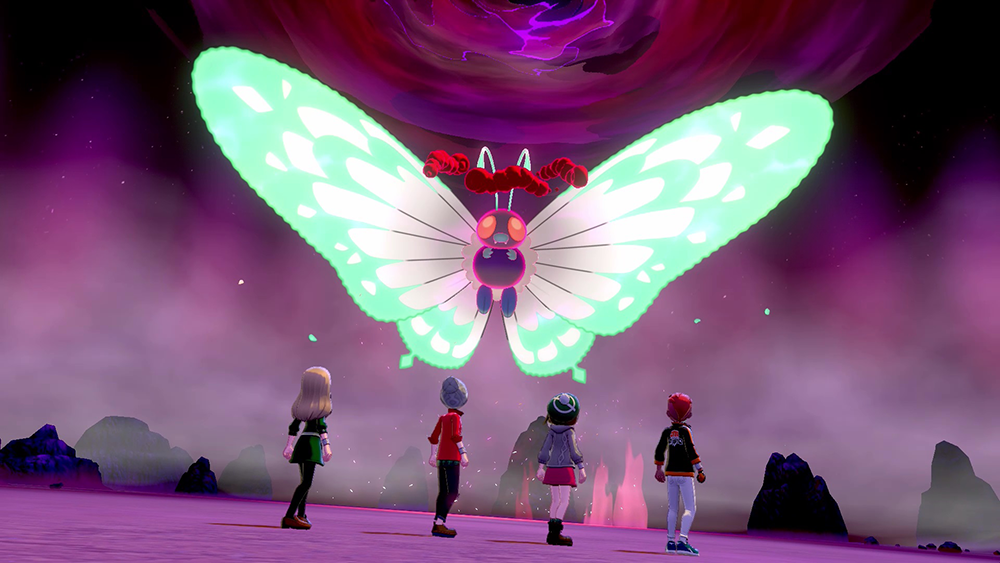
Right from the beginning of your time in Pokemon Sword and Shield, you’ll be able to spend some of your hard-earned in-game money on new pieces of your wardrobe. Because you’ll be able to play with others in the same game space, your avatars (the little character you play as), it’s always best to make sure that you look a little different than those around you.
In each city that you visit, you’ll be able to pick up new clothing for your everyday outfit and for your gym outfit. In addition, you’ll be able to freshen up your look at the salon, including changing your avatar’s hair color, eye color, and, if you’d like, your makeup. (Although that may only be if your avatar is a girl; we didn’t get a chance to test it with a boy avatar.)
Throughout your travels in the Galar region, you’ll be visiting a number of Pokemon Centers, which will allow you to purchase your fill of Poke Balls and Potions. It will also allow you to create and update your League Card. (This is why customizing your avatar for the game is important.) Your League Card shows your latest stats and you can customize the background, the frame, your avatar’s pose and position in the card, and then capture it for others to see.
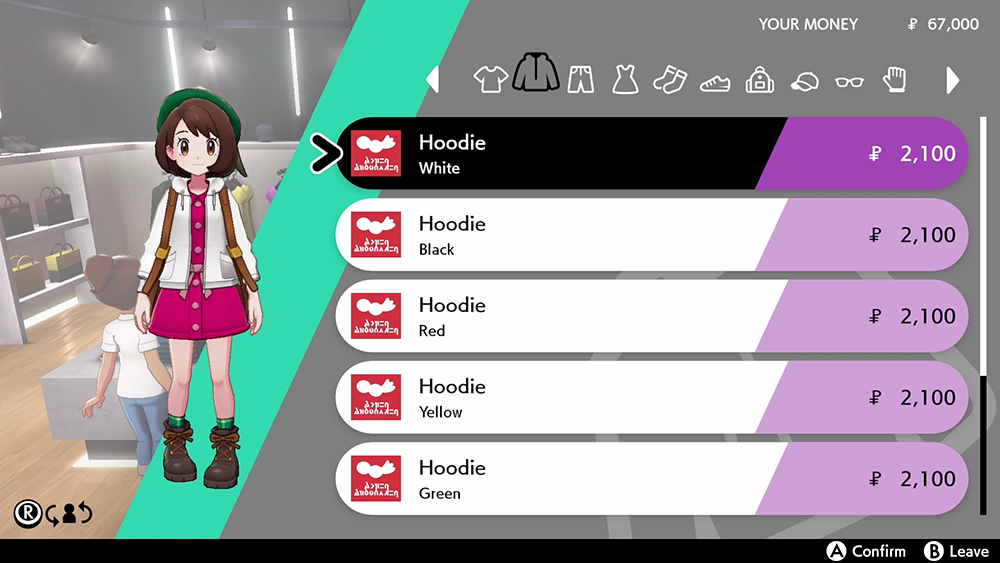
Pokemon Sword and Shield are super fun experiences, though we can make a couple of nitpicks. For one, when you play the game while connected to the internet, other players’ avatars will appear in the Wild Area for you to interact with. On the one hand, this is a fun addition, since you can get free items (like curry ingredients) by “talking” to them. However, the games also suffer from some pretty bad lag when too many avatars are on the screen at once. This makes items on the screen look like they’re moving slower than they should, and it just isn’t fun to encounter.
We also wish there was more to do once the credits roll. While there’s a short quest to complete after you’ve beaten the main storyline, there aren’t many other structured activities available, so you may need to make your own fun or goals by choosing to finish your Pokedex, hunting rare Shiny Pokemon variants, etc.
Finally, players are allowed to name their in-game character, so if you’re playing online, it’s possible that you’ll come across usernames with adult language, though this is rare.
As long as your little Pokemon fan knows that not all Pokemon are in the games, then yes, absolutely. Pokemon Sword and Shield are incredibly enjoyable games with a lot of charm and a whole lot to do between the first and last zones.
You can pick up Pokemon Sword and Pokemon Shield separately for $59.99 each at all major retailers, including Amazon. You can also opt to purchase the Pokemon Sword and Pokemon Shield Double Pack for $119.99 on Amazon.
Disclosure: Nintendo sent SuperParent Pokemon Sword and Shield for coverage purposes. Our coverage remains objective.
Editor’s Note: Amanda Farough and Brandy Berthelson contributed to this article.